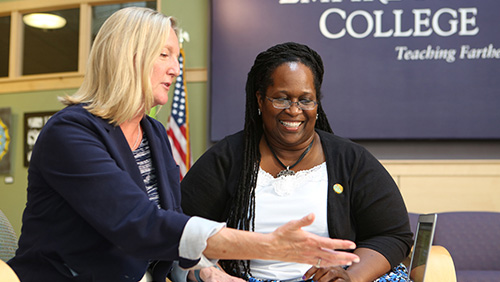December 3, 2021
Finding and Using Scholarly Sources
By Dana Longley, assistant director for Library Instruction and Info Literacy
- What are scholarly sources? Those journal articles (also called academic or peer-reviewed articles: example) and books (called 'scholarly monographs': example) are written by experts whose target audience is other experts in that field. They usually contain lots of discipline-specific jargon, in-text citations, and labeled sections like Introduction, Methodology, Conclusion, etc. Many articles in the library are scholarly, which means they are often very narrow in scope, covering just a small aspect of typical student assignment topics. This means you will not likely find scholarly articles that neatly summarize your broad topic and may instead need to access multiple articles to get a fuller picture of your topic. Most scholarly articles can be hard to read and understand; this is something all students experience (but it gets easier the more you do it).
- What is a peer-reviewed article? Most scholarly articles are peer-reviewed, though not all. Before it is published , submitted articles are sent out to other experts in the field to read and make comments and suggestions for revision. The process often takes many months to complete but ensures a higher level of quality and reliability. This is why your instructors assign such readings and often want you to use them as sources in your own academic writing.
- How do I find scholarly/peer-reviewed journal articles? The Online Library's OneSearch (the search box in the upper left of the library home page) has a limit option, on the left side of the results page after you do a search, for "in Scholarly/Peer-Reviewed journal only." Many of the library's discipline-specific databases contain a similar limit option. In addition, the OneSearch includes a "Peer-Reviewed" tag under relevant results to help you identify such articles.
- How can I effectively read and understand scholarly sources?
- Scan key sections of the article first: the abstract, introduction, and conclusion. These sections will contain summaries of key points of the article. You can then read the full article armed with this overview.
- A good notetaking habit is the key to understanding any scholarly source. Good notetaking includes more than just highlighting text. Instead, or in addition, write down notes in your own words summarizing key passages or ideas that could be useful to you for writing a paper or understanding how the content fits into your understanding of the topic. This can be done in the margins of a printout or on a separate piece of paper or Word document (make sure you include the citation info of the article it goes with!). Advanced researchers (for longer research papers or literature reviews) and graduate students might also want to try constructing a synthesis matrix, which is one of the most effective ways to organize and extract useful information out of multiple scholarly sources.


